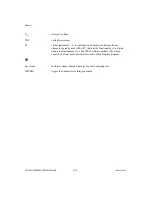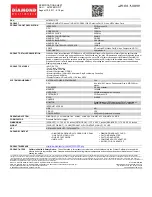
Glossary
©
National Instruments Corporation
G-5
PCI-4451/4452/4453/4454 User Manual
dBFS
absolute signal level compared to full scale
DC
direct current
DC coupled
allowing the transmission of both AC and DC signals
DDS clock
Direct Digital Synthesis clock—a type of clock source with an output
frequency controlled by a digital input word
default setting
a default parameter value recorded in the driver. In many cases, the default
input of a control is a certain value (often 0) that means use the current
default setting. For example, the default input for a parameter may be do
not change current setting, and the default setting may be no AMUX-64T
devices. If you do change the value of such a parameter, the new value
becomes the new setting. You can set default settings for some parameters
in the configuration utility or manually using switches located on the
device.
delta-sigma
modulating ADC
a high-accuracy circuit that samples at a higher rate and lower resolution
than is needed and (by means of feedback loops) pushes the quantization
noise above the frequency range of interest. This out-of-band noise is
typically removed by digital filters.
device
a plug-in data acquisition device, card, or pad that can contain multiple
channels and devices. Plug-in boards, PCMCIA cards, and devices such as
the DAQPad-1200, which connects to your computer parallel port, are all
examples of DAQ devices. SCXI modules are distinct from devices, with
the exception of the SCXI-1200, which is a hybrid.
DIFF
differential mode
differential input
an analog input consisting of two terminals, both of which are isolated from
computer ground, whose difference is measured
differential
measurement system
a way you can configure your device to read signals, in which you do not
need to connect either input to a fixed reference, such as the earth or a
building ground
digital port
See port.
digital trigger
a TTL level signal having two discrete levels—a high and a low level
















































